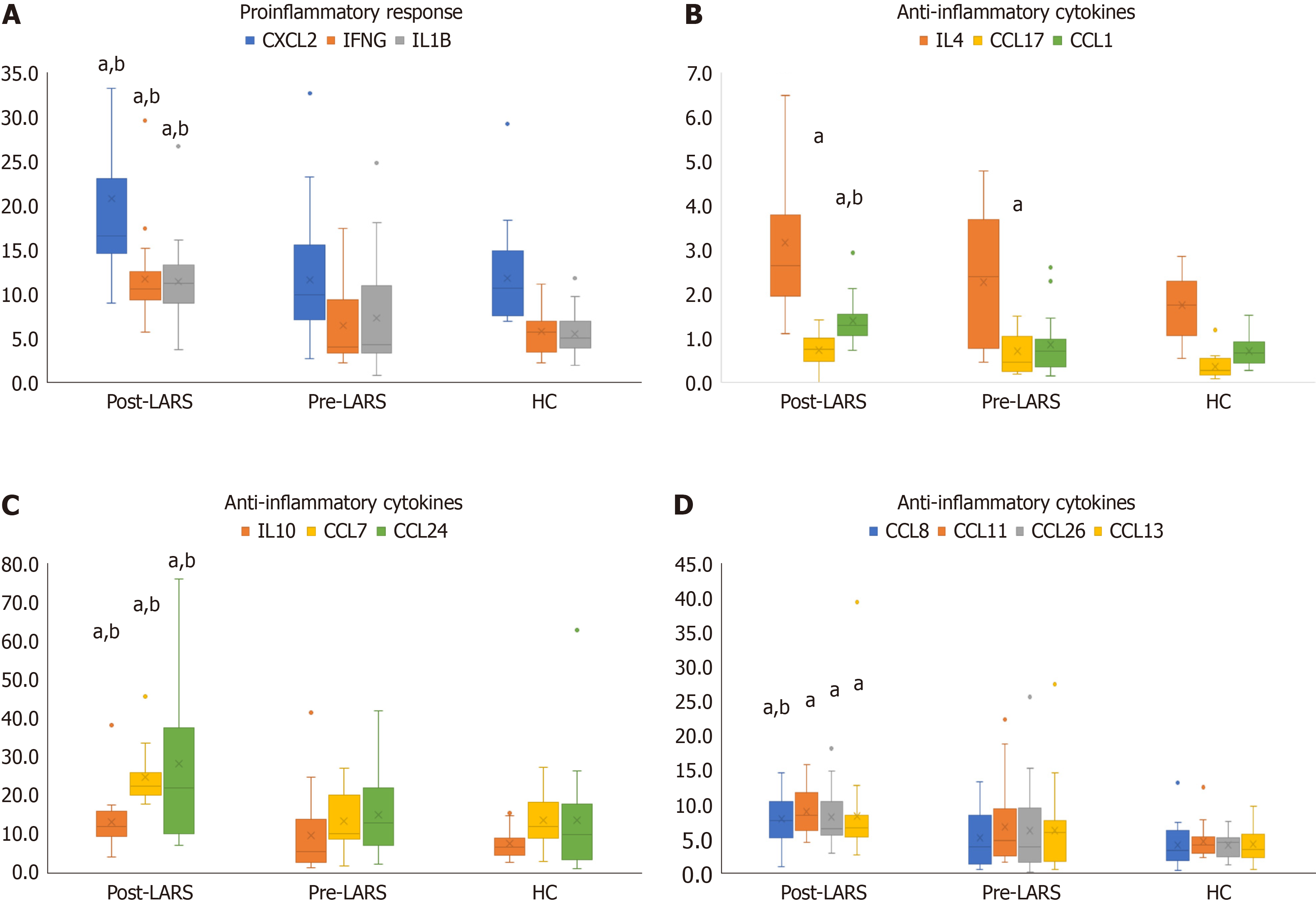Copyright
©The Author(s) 2024.
World J Gastrointest Surg. Mar 27, 2024; 16(3): 871-881
Published online Mar 27, 2024. doi: 10.4240/wjgs.v16.i3.871
Published online Mar 27, 2024. doi: 10.4240/wjgs.v16.i3.871
Figure 1 Study design.
Pre-LARS: Pre-laparoscopic anti-reflux surgery; Post-LARS: Post-laparoscopic anti-reflux surgery; HRM: High-resolution manometry; MII-pH: Multichannel intraluminal impedance-pH; PPI: Proton pump inhibitor; RT-PCR: Real-time polymerase chain reaction; ELISA: Enzyme-linked immunosorbent assay; GI: Gastrointestinal.
Figure 2 Significant gene expression.
A: Significant gene expression in the post-laparoscopic anti-reflux surgery group compared to healthy controls; B: Significant gene expression in the post-laparoscopic anti-reflux surgery group compared to pre-laparoscopic anti-reflux surgery group. All comparisons are given as fold changes. BCL3: B-cell CLL/lymphoma 3; FGF2: Fibroblast growth factor 2; IFNAR1: Interferon (alpha, beta and omega) receptor 1; IKBKE: Inhibitor of kappa light polypeptide gene enhancer in B-cells, kinase epsilon; JUN: Jun proto-oncogene; MAP2K4: Mitogen-activated protein kinase 4; EGF: Epidermal growth factor; TNFRSF1A: Tumor necrosis factor receptor superfamily, member 1A.
Figure 3 Cytokine results.
A: Cytokine results indicating the proinflammatory response; B-D: Cytokine results indicating the anti-inflammatory response. aP < 0.05 vs healthy control; bP < 0.05 vs pre-laparoscopic anti-reflux surgery. CXCL: CXC motif chemokine ligand; IFN: Interferon gamma; IL: Interleukin; LARS: Laparoscopic anti-reflux surgery; HC: Healthy control.
- Citation: Ergun P, Kipcak S, Selvi Gunel N, Yildirim Sozmen E, Bor S. Inflammatory responses in esophageal mucosa before and after laparoscopic antireflux surgery. World J Gastrointest Surg 2024; 16(3): 871-881
- URL: https://www.wjgnet.com/1948-9366/full/v16/i3/871.htm
- DOI: https://dx.doi.org/10.4240/wjgs.v16.i3.871











